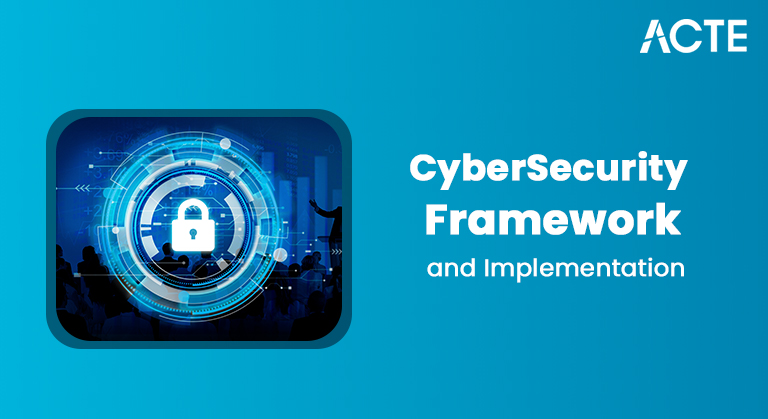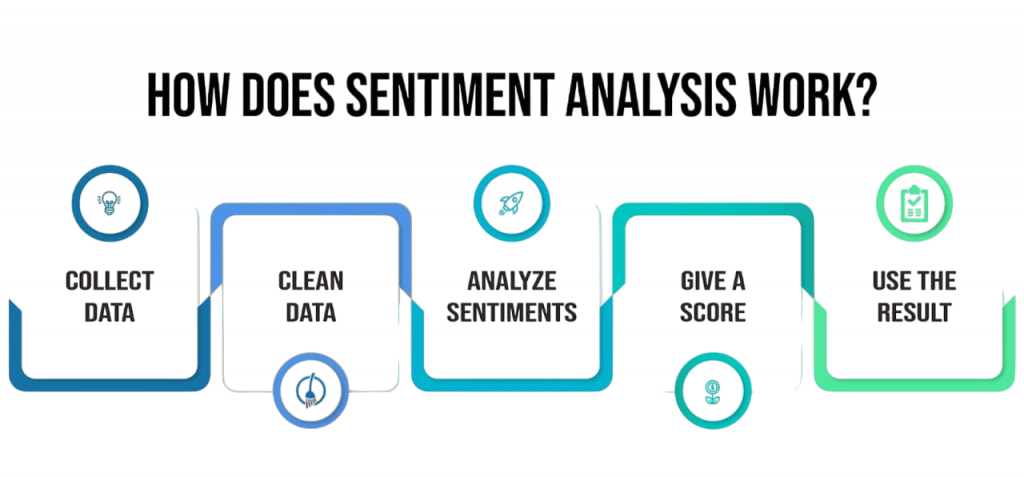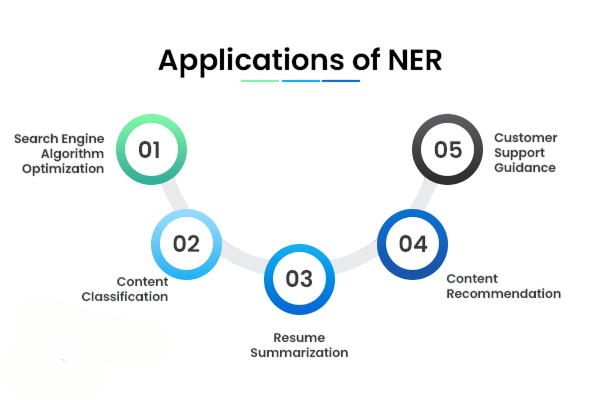
- Introduction to Natural Language Processing
- Text Classification
- Sentiment Analysis
- Machine Translation
- Chatbots and Virtual Assistants
- Speech Recognition
- Named Entity Recognition (NER)
- Question Answering Systems
- Text Summarization
- Language Modeling
- Real-World Use Cases
- Future Trends in NLP
Introduction to Natural Language Processing
Natural Language Processing (NLP) is a subfield of artificial intelligence (AI) that focuses on the interaction between computers and human language. It enables machines to read, understand, interpret, and generate human language in a valuable way. NLP combines computational linguistics with machine learning, statistics, and deep learning models to analyze and process large volumes of natural language data. For foundational and advanced skills, explore Machine Learning Training. The increasing volume of textual data generated through emails, social media, customer reviews, and other digital platforms has made NLP an essential technology across industries. From powering voice assistants like Siri and Alexa to facilitating machine translation and text analytics, NLP is revolutionizing the way machines understand human communication.
Ready to Get Certified in Machine Learning? Explore the Program Now Machine Learning Online Training Offered By ACTE Right Now!
Text Classification
Text classification is the process of assigning predefined categories or labels to text. It is foundational to many NLP applications, such as spam detection, sentiment analysis, and topic labeling. Text classification involves preprocessing the text, extracting features, and applying machine learning or deep learning models to categorize the text. Text classification uses a variety of techniques and algorithms to turn unstructured text into meaningful insights. Common methods include Bag of Words (BoW), which represents text as collections of word counts, and Term Frequency-Inverse Document Frequency (TF-IDF), which weighs words based on their frequency across the corpus. To complement these foundational techniques with scalable development platforms, exploring Best Machine Learning Tools reveals top frameworks like TensorFlow, Accord.NET, and Apache Mahout each offering specialized capabilities for building, training, and deploying intelligent models across domains such as NLP, image recognition, and predictive analytics. Advanced methods like Word Embeddings and Transformers greatly improve semantic understanding. Models such as Word2Vec, GloVe, BERT, and RoBERTa have changed the field of natural language processing. Researchers and data scientists use strong algorithms, including Naive Bayes, Logistic Regression, Support Vector Machines, Convolutional and Recurrent Neural Networks, and innovative Transformer models. They evaluate these text classification models using metrics like accuracy, precision, recall, and F1-score to ensure solid performance across various linguistic challenges.
Sentiment Analysis
Sentiment analysis, also known as opinion mining, is a type of text classification that determines the emotional tone behind a body of text. It is one of the earliest and most widely known applications of NLP. To complement this application with foundational and advanced learning resources, exploring Deep Learning Books reveals expert-recommended titles that balance theory and implementation covering neural networks, computer vision, and sequence modeling to help practitioners build robust models for tasks like sentiment analysis and beyond.
Types of Sentiment Analysis
- Binary Sentiment Analysis: Positive or Negative
- Multiclass Sentiment Analysis: Positive, Neutral, Negative
- Fine-grained Sentiment Analysis: Scoring on a scale (e.g., 1 to 5 stars)
Tools and Libraries
- TextBlob: Simple library for NLP tasks including sentiment.
- VADER: Pre-trained model for sentiment analysis tuned for social media text.
- SpaCy: Powerful NLP library supporting many pipelines.
- Transformers: Hugging Face’s models offer state-of-the-art performance.

Sentiment analysis is vital for brand management, political analysis, and market research.
Machine Translation
Machine Translation (MT) refers to the automatic conversion of text or speech from one language to another. It is one of the earliest and most widely known applications of NLP. To complement this application with foundational modeling techniques, exploring Machine Learning Algorithms reveals how supervised, unsupervised, and reinforcement learning approaches such as SVM, KNN, Decision Trees, and Gradient Boosting enable systems to learn patterns, make predictions, and improve translation accuracy over time.
- Rule-Based Machine Translation (RBMT): Uses grammar rules and dictionaries.
- Statistical Machine Translation (SMT): Based on probabilistic models derived from bilingual corpora.
- Neural Machine Translation (NMT): Uses deep neural networks, particularly RNNs and transformers.
Notable Models
- Google Translate
- Facebook FAIR’s M2M-100
- MarianMT by Microsoft
- OpenNMT and Fairseq
Translation accuracy has improved significantly with large-scale Transformer based models trained on diverse multilingual datasets.
To Explore Machine Learning in Depth, Check Out Our Comprehensive Machine Learning Online Training To Gain Insights From Our Experts!
Chatbots and Virtual Assistants
Chatbots and virtual assistants have become important interactive software applications that use Natural Language Processing (NLP) to allow smooth user interactions in various sectors. These systems fall into two main types, rule-based chatbots that use predefined decision trees, and AI-powered chatbots that use machine learning and deep learning techniques to create natural, relevant responses. For foundational and advanced skills, explore Machine Learning Training. Key functional parts include intent recognition, which helps understand user goals; entity extraction, which identifies key information; dialogue management, which keeps the conversation flowing; and intelligent response generation, which uses advanced NLP models and templates. Platforms like Google Dialogflow, Microsoft Bot Framework, Amazon Lex, and Rasa have made chatbot development more accessible. This lets organizations in customer service, healthcare, banking, and personal productivity create smart conversational interfaces that improve user engagement and operational efficiency. It is one of the earliest and most widely known applications of NLP.
Speech Recognition
Speech recognition, also known as automatic speech recognition (ASR), converts spoken language into text. It is foundational for voice-enabled interfaces. To complement this application with a probabilistic classification approach, exploring Logistic Regression reveals how the sigmoid function transforms input features into binary or multiclass predictions making it a reliable model for tasks like intent detection, sentiment classification, and voice command interpretation within ASR systems.
Workflow
- Audio Signal Processing
- Feature Extraction: MFCC, spectrograms
- Acoustic Modeling
- Language Modeling
- Decoding and Transcription
Tools and APIs
- Google Speech-to-Text
- Amazon Transcribe
- IBM Watson Speech to Text
- Open-source solutions like Kaldi, DeepSpeech
Applications include voice assistants, call center transcription, and real-time captioning.
Looking to Master Machine Learning? Discover the Machine Learning Expert Masters Program Training Course Available at ACTE Now!
Named Entity Recognition (NER)
NER is the process of identifying and categorizing entities in text into categories like people, organizations, locations, dates, etc. To complement this NLP technique with a structured evaluation method, exploring Confusion Matrix in Machine Learning reveals how classification outcomes true positives, false positives, true negatives, and false negatives are organized into a matrix that helps assess model accuracy, precision, recall, and error types across entity recognition tasks.
Applications
- Information Retrieval: Extract key data from documents.
- Content Classification: Structure unstructured data.
- Customer Support: Understand context from messages.

Approaches
- Rule-based systems.
- Machine learning using CRFs.
- Deep learning using LSTM, BiLSTM-CRF.
- Transformer based models (e.g., BERT).
NER is crucial in structuring information for downstream tasks.
Question Answering Systems
Question Answering (QA) systems are an important technological advancement. They enable machines to understand and respond to natural language questions in various contexts. These complex systems act as key parts of modern digital platforms, powering search engines, smart digital assistants, and customer support solutions. QA technologies include different methods. Open-domain systems draw from wide knowledge bases, while closed-domain systems focus on specific areas. To complement these approaches with ensemble learning strategies, exploring Bagging vs Boosting reveals how bagging reduces variance by training models independently on random subsets, while boosting reduces bias by sequentially correcting errors both enhancing the accuracy and stability of question-answering systems across diverse domains. Extractive methods retrieve answers directly from text, and generative approaches use advanced language models to form responses. Important datasets like SQuAD, Natural Questions, and HotpotQA have greatly contributed to QA research. Transformer models such as BERT, RoBERTa, and T5 have improved performance standards, showing strong abilities in understanding and generating human-like text. It is one of the earliest and most widely known applications of NLP.
Preparing for Machine Learning Job Interviews? Have a Look at Our Blog on Machine Learning Interview Questions and Answers To Ace Your Interview!
Text Summarization
Text summarization creates shorter versions of text while retaining the core message. This is valuable for media monitoring, academic research, and news aggregation. To complement these NLP applications with foundational algorithmic insight, exploring What Is Machine Learning reveals how techniques like regression, classification, clustering, and anomaly detection empower systems to learn from data automating tasks such as summarization, translation, and sentiment analysis with increasing accuracy and efficiency.
Types
- Extractive: Selects important sentences from the source.
- Abstractive: Paraphrases and rewrites the content.
Techniques
- LexRank, TextRank: Graph-based.
- Seq2Seq with attention.
Evaluation metrics include ROUGE, BLEU, and METEOR scores.
Language Modeling
Language modeling predicts the likelihood of a sequence of words. It’s foundational for text generation, speech recognition, and translation. It is one of the earliest and most widely known applications of NLP. To complement these probabilistic approaches with margin-based classification techniques, exploring Support Vector Machine (SVM) Algorithm reveals how SVMs construct optimal hyperplanes to separate classes leveraging kernel tricks and support vectors to handle both linear and non-linear data across tasks like text classification, image recognition, and bioinformatics.
Types
- Statistical Models: N-grams.
- Neural Networks: RNNs, LSTMs.
- Transformer based models: GPT, XLNet, BERT (masked modeling).
Applications
- Spell checkers.
- Autocomplete.
- Content creation.
- Chatbots.
Advanced language models now support zero-shot and few-shot learning tasks.
Real-World Use Cases
Natural Language Processing (NLP) is changing various industries by providing innovative tech solutions in many areas. In healthcare, NLP helps analyze electronic health records, allowing providers to gather important insights about symptoms, diseases, and treatments. It also powers smart medical triage chatbots. Financial institutions use NLP to examine complex documents, monitor market sentiment, and develop robo-advisors that give data-driven investment advice. Legal professionals gain from tools that analyze contracts, advanced search engines, and technologies that predict litigation outcomes, making their research processes easier. To complement these domain-specific NLP applications with interpretable modeling techniques, exploring Decision Trees in Machine Learning reveals how tree-based algorithms segment data through hierarchical splits enabling transparent decision-making, low entropy classification, and visual traceability across financial and legal analytics workflows. Retail and e-commerce sites use NLP to create personalized product recommendations, automate customer support, and track review sentiment. Moreover, educational institutions use NLP-powered tutoring systems to grade essays, summarize reading materials, and create tailored learning experiences. This shows the technology’s great flexibility and potential to improve efficiency across various fields.
Future Trends in NLP
- Multilingual and Cross-lingual Models: NLP models are increasingly capable of understanding multiple languages, even without direct training data, thanks to techniques like transfer learning and multilingual transformers.
- Ethical NLP and Bias Mitigation: Ensuring fairness, transparency, and accountability in NLP models is becoming a key concern. Researchers are actively working on de-biasing language models and ensuring responsible AI.
- Low-Resource Language Processing: More attention is being paid to building NLP solutions for languages with limited digital presence, using few-shot and zero-shot learning. For foundational and advanced skills, explore Machine Learning Training.
- Edge NLP: Running NLP on local devices (smartphones, IoT devices) enhances privacy and reduces latency.
- Integration with Knowledge Graphs: Combining structured data from knowledge graphs with NLP improves understanding, context, and reasoning abilities of AI systems.
- Foundation Models: Large pretrained models like GPT-4, PaLM, and LLaMA are transforming NLP by supporting a wide range of tasks with minimal fine-tuning.
Natural Language Processing continues to push the boundaries of machine understanding of human language. As models become more sophisticated and data becomes more accessible, the potential for real-world impact grows across virtually every domain.



